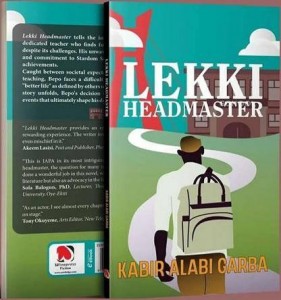Waec

Food/Nut-Obj
1-10: BADDBDBBBA
11-20: BBDBADABCA
21-30: BCBCDAADCC
31-40: ABDCADAACA
41-50: CCACBDDDAB
51-60: CADCCDCAAC
(3a)
(i) Table Appointments: Table appointments refer to the items or accessories placed on the dining table to enhance the dining experience and presentation. These can include items such as tablecloths, napkins, placemats, flatware (cutlery), glassware, and dishes.
(ii) Table Setting: Table setting is the arrangement of tableware, utensils, and other elements on a dining table for each individual diner. It includes the placement of items such as plates, forks, knives, spoons, glasses, and napkins in a specific order and manner according to formal or informal dining etiquette.
(iii) Centerpiece: A centerpiece is a decorative item or arrangement placed in the center of the dining table, typically intended to serve as a focal point and enhance the overall ambiance of the dining setting. Centerpieces can vary widely in style and composition, ranging from floral arrangements to candles, fruit bowls, decorative sculptures, or themed ornaments.
(3b)
(i) Plates
(ii) Bowls
(3c)
(i) Napkins are used to wipe hands and mouths during and after meals, maintaining cleanliness.
(ii) Placing a napkin on the lap is a sign of good manners, signaling the start of the meal.
(iii) It is used to dab or blot food stains from clothing or the face.
(6a)
(i)Budget: The budget is perhaps the most crucial factor as it dictates nearly every decision in the wedding planning process. From the venue to the catering, decorations.
(ii)Venue and Date: Selecting the right venue is key to setting the tone for the wedding. The venue needs to accommodate the number of guests, fit within the budget, and be available on the desired date.
(iii)Guest List: The size of the guest list influences the scale of the wedding and impacts the budget and choice of venue.
(iv)Vendors and Services: This includes choosing reliable suppliers for catering, photography, music, and flowers.
(6b)
(i)Buffet Style
(ii)Food Stations
(iii)Family Style
(iv)Cocktail Style
(6c)
(i)Mason Jars
(ii)Stemless Wine Glasses
(4a)
(i) Nutrient-rich: Fruits are packed with essential vitamins, minerals, and antioxidants crucial for growth and development during adolescence.
(ii) Fiber content: Fruits are a great source of dietary fiber, which aids in digestion, maintains bowel health, and helps prevent constipation.
(iii) Hydration: Many fruits have high water content, contributing to overall hydration, especially important for active adolescents.
(4b)
(i) Fresh fruits (such as berries, mangoes, or peaches)
(ii) Sugar or sweetener (to taste)
(iii) Heavy cream
(4c)
(i) Wash and prepare the fruits by cutting them into bite-sized pieces.
(ii) In a bowl, mash some of the fruits to release their juices while leaving some chunks for texture.
(iii) Sweeten the mashed fruits with sugar or sweetener according to taste.
(iv) In a separate bowl, whip the heavy cream until it forms stiff peaks.
(v) Gently fold the whipped cream into the mashed fruits until well combined.
(vi) Optionally, you can add a layer of yogurt or custard at the bottom of serving glasses for extra flavor and texture.
(vii) Spoon the fruit fool mixture into serving glasses or bowls.
(viii) Chill the fruit fool in the refrigerator for at least an hour before serving.
(ix) Garnish with additional fruit slices or mint leaves if desired before serving. Enjoy your delicious and refreshing fruit fool.
(5a)
(i)Chicken and turkey, particularly the dark meat parts, are excellent sources of phosphorus.
(ii)Dairy products, such as milk, cheese, and yogurt, contain high levels of phosphorus.
(iii)Fish, especially salmon, trout, and carp, are rich in phosphorus.
(iv)Seeds and nuts, with pumpkin seeds and sunflower seeds being particularly high in phosphorus.
(v)Whole grains, like oats, brown rice, and whole wheat, are good sources of phosphorus.
(vi)Beans and lentils also provide a significant amount of phosphorus.
(5b)
(i)Weakness and fatigue, as phosphorus is essential for energy production.
(ii)Bone pain and fragile bones, due to phosphorus’s role in bone health and development.
(iii)Loss of appetite, which can further exacerbate nutritional deficiencies.
(iv)Irregular breathing, since phosphorus plays a part in maintaining healthy muscle function, including the muscles involved in breathing.
(1ai)
The kind of reaction that occurred with the beef is a decomposition reaction. In other words reaction is typically enhanced by factors such as warmth and moisture, which are conducive to bacterial growth.
(1aii)
(i)Bacterial Activity
(ii)Enzymatic Breakdown
(iii)Warmth
(1aiii)
To prevent the reaction that occurred on the beef, the caterer could have taken the following steps:
-Refrigeration
-Freezing
(1aiv)
(i)Refrigerator
(ii)Freezer
(1b)
Perishable food items are those that are consumed quickly, before they spoil. Conversely, non-perishable food items last for a long time. Perishable foods include fresh fruits and vegetables. Non-perishable foods include canned goods and dried meats, dried fruit, and nuts.
RECOMMENDED TOPICS
- JAMB 2025 UTME/DE registration document – step-by-step on how to apply for UTME and DE

- JAMB postpones 2025 UTME Registration to February 3rd

- JAMB Officially Announces 2025 UTME Registration, Exam, Mock Dates, Cost and Important Details

- The official reading novel for Jamb 2025 is Lekki Headmaster

- Subjects for Computer Science in JAMB for Guaranteed Success


